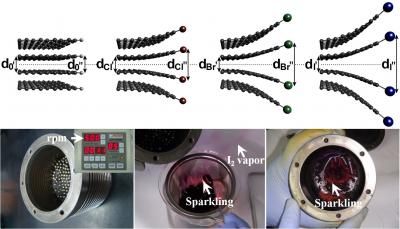Non-toxic flame retardants
Advertisement
Synthetic materials made from organic polymers usually burn very well due to their high carbon content; when turned into foams, they ignite even more easily -- and, depending on their chemical compositions, they produce toxic gases such as hydrogen cyanide or carbon monoxide. For this reason, polyurethane foams and other similar products have to be treated with flame retardants. These foam materials are widely used in upholstered furniture and mattresses, as insulation and packaging materials and as expanding spray foams.

This image shows polyurethane foam under an optical microscope. The flame retardant has no effect on the structure of the foam.
Empa
Conventional halogenated flame retardants such as tri(chloropropyl) phosphate (TCPP) or some polybrominated diphenyl ethers (PBDE) are suspected of being harmful to health and the environment: a number of these substances are extremely persistent and accumulate in the environment, have hormone-like effects and are even thought to be carcinogenic. Non-harmful replacements are therefore called for. These are exactly what Empa researchers have developed in conjunction with Swiss company FoamPartner within the scope of a project sponsored by the Commission for Technology and Innovation (CTI).
Healthier, more environmentally friendly and with no additional cost
The novel flame retardants are organic phosphorus-containing compounds, so-called phosphoramidates. The Empa researchers synthesised several of these substances (which differ from each other in terms of the type of amine substituents attached to the phosphorus) and added them to the polyurethane foam in increasing concentrations. First results indicate that the flame retardants did not have a negative effect on the foam manufacturing process. As a result, conventional agents that are harmful to health may soon be a thing of the past. The research results have recently been accepted by the journal Industrial & Engineering Chemistry Research and authorised for publication.
Most read news
Other news from the department science

Get the chemical industry in your inbox
By submitting this form you agree that LUMITOS AG will send you the newsletter(s) selected above by email. Your data will not be passed on to third parties. Your data will be stored and processed in accordance with our data protection regulations. LUMITOS may contact you by email for the purpose of advertising or market and opinion surveys. You can revoke your consent at any time without giving reasons to LUMITOS AG, Ernst-Augustin-Str. 2, 12489 Berlin, Germany or by e-mail at revoke@lumitos.com with effect for the future. In addition, each email contains a link to unsubscribe from the corresponding newsletter.
































































